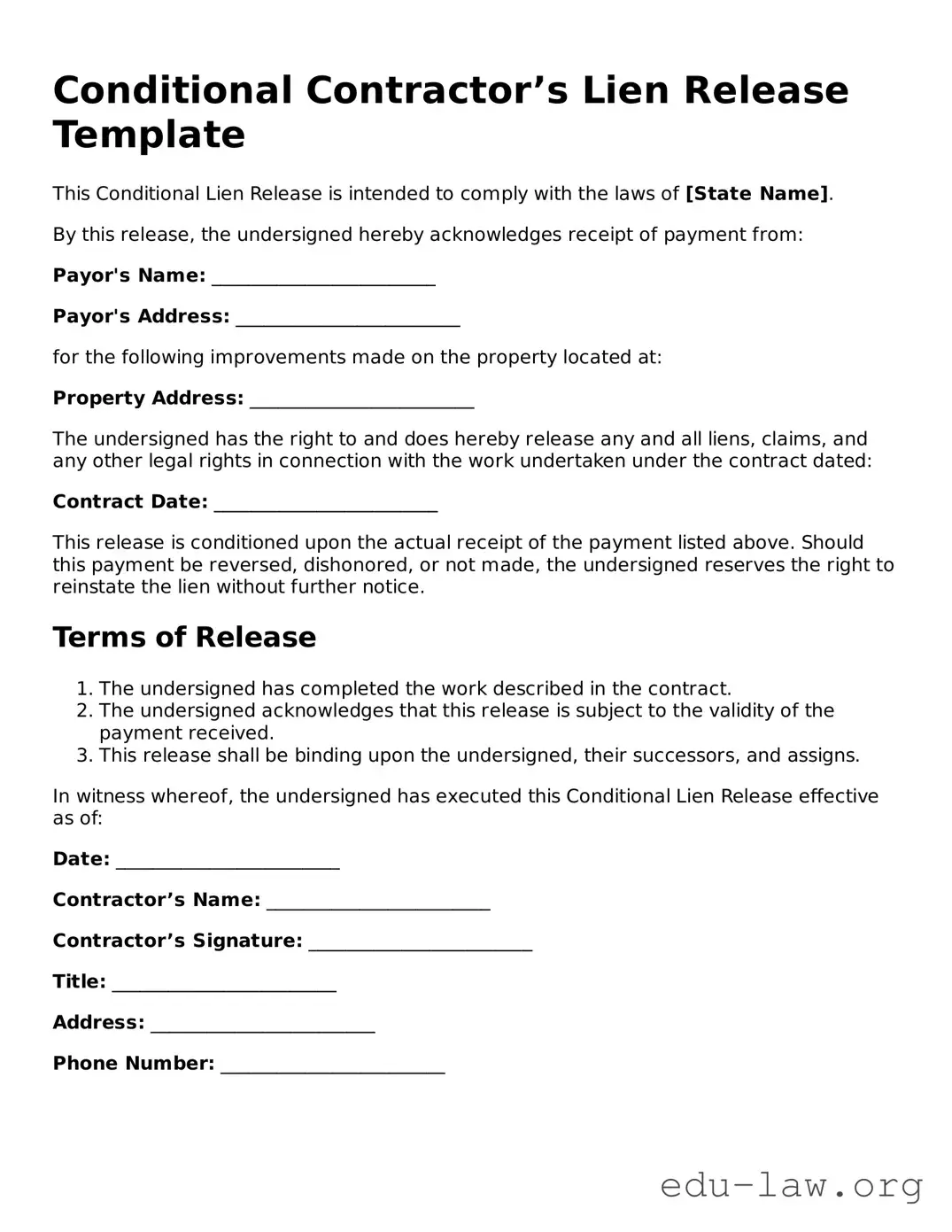Conditional Contractor’s Lien Release Template
This Conditional Lien Release is intended to comply with the laws of [State Name].
By this release, the undersigned hereby acknowledges receipt of payment from:
Payor's Name: ________________________
Payor's Address: ________________________
for the following improvements made on the property located at:
Property Address: ________________________
The undersigned has the right to and does hereby release any and all liens, claims, and any other legal rights in connection with the work undertaken under the contract dated:
Contract Date: ________________________
This release is conditioned upon the actual receipt of the payment listed above. Should this payment be reversed, dishonored, or not made, the undersigned reserves the right to reinstate the lien without further notice.
Terms of Release
- The undersigned has completed the work described in the contract.
- The undersigned acknowledges that this release is subject to the validity of the payment received.
- This release shall be binding upon the undersigned, their successors, and assigns.
In witness whereof, the undersigned has executed this Conditional Lien Release effective as of:
Date: ________________________
Contractor’s Name: ________________________
Contractor’s Signature: ________________________
Title: ________________________
Address: ________________________
Phone Number: ________________________
